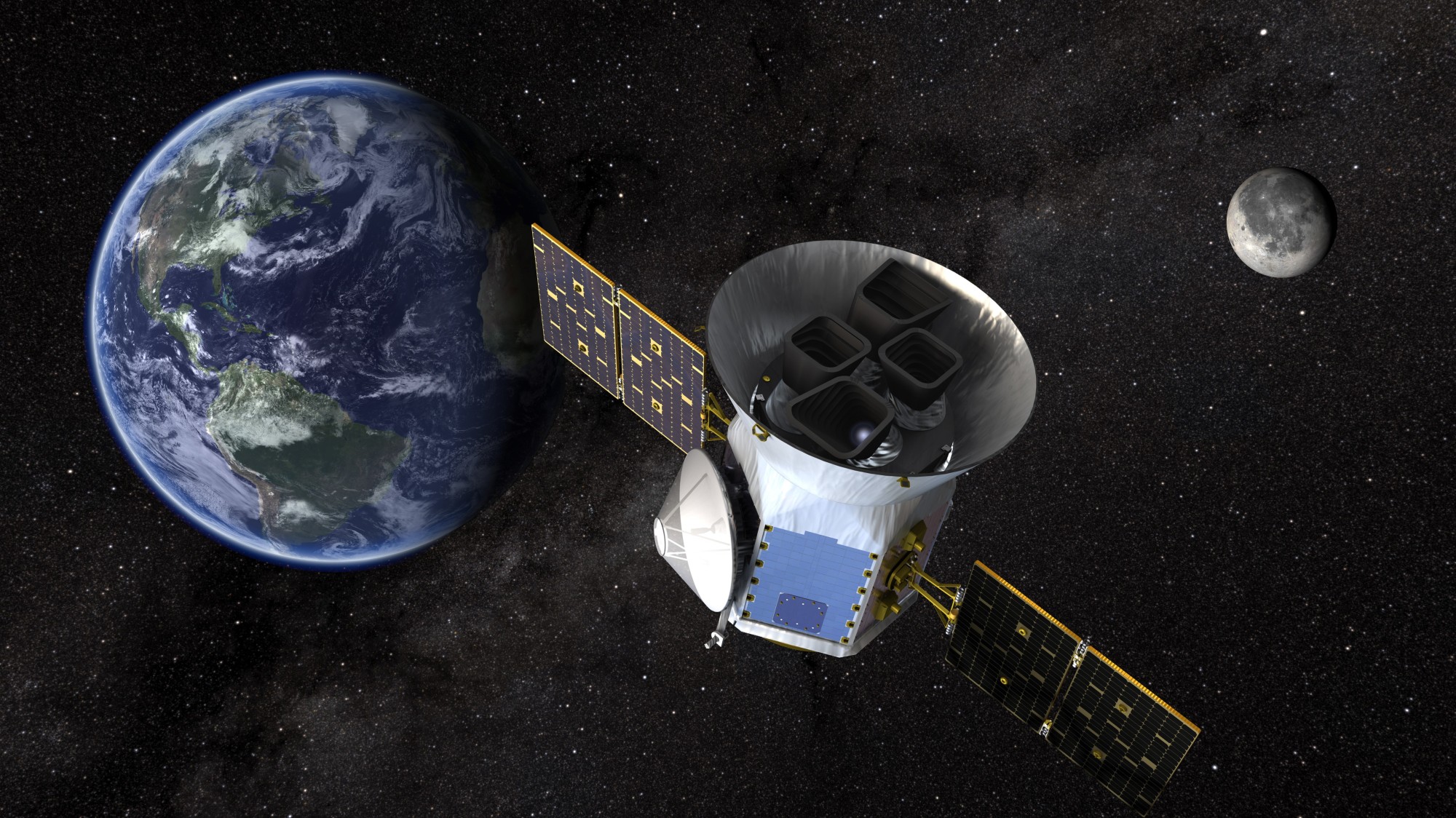
We keep getting reminders that the Milky Way's planetary diversity dwarfs what we see in our own solar system.
The newfound exoplanet TOI-1685 b is yet another case in point. Astronomers found it circling a dim red dwarf star about 122 light-years from Earth. "Circling" is too ordinary a world for TOI-1685 b's motion, however; the alien world whips around its parent star once every 0.67 Earth days.
Red dwarfs, also known as M dwarfs, are much smaller and dimmer than Earth's sun, but TOI-1685 b's extreme proximity to its host star, called TOI-1685, makes it a very toasty world nonetheless. The discovery team estimates its surface temperature to be around 1,465 degrees Fahrenheit (796 degrees Celsius).
Related: The strangest alien planets (gallery)
The researchers, led by Paz Bluhm of Heidelberg University in Germany, first spotted TOI-1685 b in observations made by NASA's Transiting Exoplanet Survey Satellite (TESS). As its name suggests, TESS looks for transits, the tiny brightness dips caused by planets crossing their host stars' faces from the Earth-orbiting spacecraft's perspective.
TESS noted such a dip around the red dwarf TOI-1685. Bluhm and her colleagues then confirmed the planet's existence using data gathered by the CARMENES spectrograph instrument, which is installed on the 3.5-meter telescope at the Calar Alto Observatory in Spain. (CARMENES is short for "Calar Alto high-Resolution search for M dwarfs with Exo-earths with Near-infrared and optical Echelle spectrographs.)
CARMENES hunts for planets using the radial velocity, or Doppler, method — looking for little wobbles in a star's motion caused by the gravitational tug of an orbiting planet.
Get the Space.com Newsletter
Breaking space news, the latest updates on rocket launches, skywatching events and more!
Related: 7 ways to discover alien planets
The combined data allowed the team to determine that TOI-1685 b is a "super-Earth" about 1.7 times bigger, and 3.8 times more massive, than our home planet. The resulting bulk density — about 4.2 grams per cubic centimeter, or 0.15 lbs. per cubic inch — makes TOI-1685 b "the least dense ultra-short period planet around an M dwarf known to date," Bluhm and her colleagues wrote in the discovery paper, which you can read for free on the online preprint site arXiv.org. (The paper has not yet been published in a peer-reviewed journal.)
For perspective: Earth's bulk density is about 5.5 grams per cubic centimeter, or 0.20 lbs. per cubic inch.
The fact that TOI-1685 b transits and is quite warm makes it a good candidate for follow-up study by other instruments, the researchers wrote. In that regard, TOI-1685 b is similar to another recent exoplanet find made using TESS and CARMENES data, Gliese 486 b.
Bluhm and her team also saw another signal in the CARMENES TOI-1685 data, which could indicate a second planet in the system that orbits once every nine Earth days. If this candidate planet exists, it doesn't transit, because TESS recorded no corresponding signal, the researchers wrote.
Mike Wall is the author of "Out There" (Grand Central Publishing, 2018; illustrated by Karl Tate), a book about the search for alien life. Follow him on Twitter @michaeldwall. Follow us on Twitter @Spacedotcom or Facebook.
Join our Space Forums to keep talking space on the latest missions, night sky and more! And if you have a news tip, correction or comment, let us know at: community@space.com.

Michael Wall is a Senior Space Writer with Space.com and joined the team in 2010. He primarily covers exoplanets, spaceflight and military space, but has been known to dabble in the space art beat. His book about the search for alien life, "Out There," was published on Nov. 13, 2018. Before becoming a science writer, Michael worked as a herpetologist and wildlife biologist. He has a Ph.D. in evolutionary biology from the University of Sydney, Australia, a bachelor's degree from the University of Arizona, and a graduate certificate in science writing from the University of California, Santa Cruz. To find out what his latest project is, you can follow Michael on Twitter.








